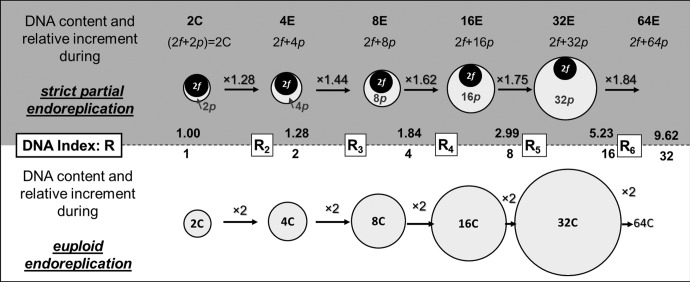Fig. 6.—
A general model for strict partial endoreplication. In this cartoon, the area of each object faithfully reflects its relative size. This example is based upon leafy apex of diploid Vanilla planifolia: 2n = 2x = 32 with 2C = 4.59 pg and P = 0.284 ± 0.003 (32 estimates) so 2p = 1.30 pg in the diploid nucleus whereas the major nonreplicating component is 2f = 3.29 pg. Canonical euploid endoreplication yields nuclear classes of 2C, 4C, 8C, 16C, 32C, 64C, etc. Strict partial endoreplication yields nuclear classes termed 2C, 4E, 8E, 16E, 32E, where E symbolizes a state related to the number of copies of the endoreplicated DNA. F is the fixed proportion of the haploid genome which cannot endoreplicate and P the part potentially participating in endoreplication. The term “strict” supports the observation that F and P are constant during development of a given plant. The italic lower cases (f, p) denote the respective DNA quantities of F and P fraction. R is the DNA index. The DNA index of the second peak in a partial endoreplication series, R2, gives an initial estimation of P = (R2 − 1), 1 being the P value in classical endoreplication.

